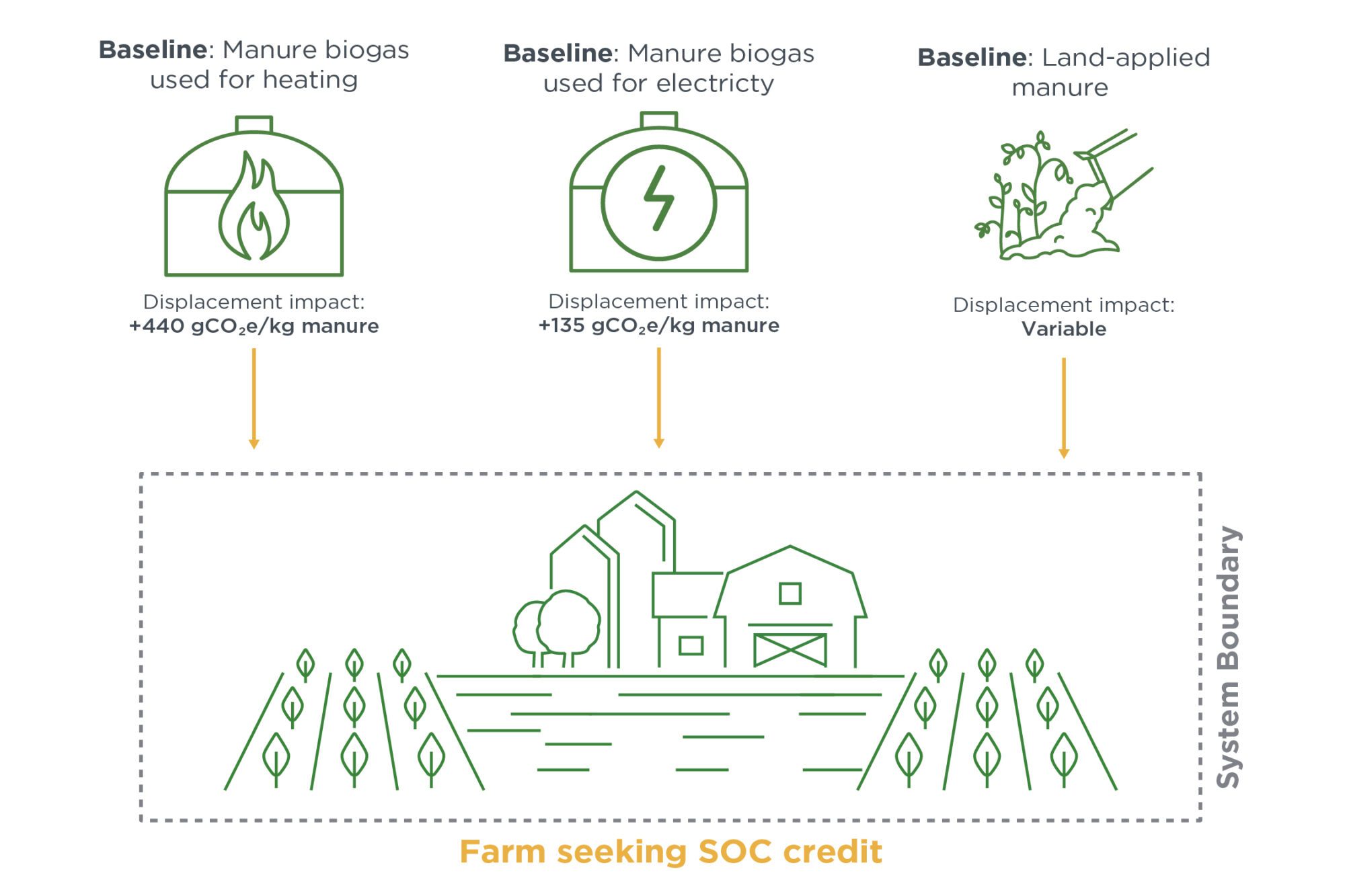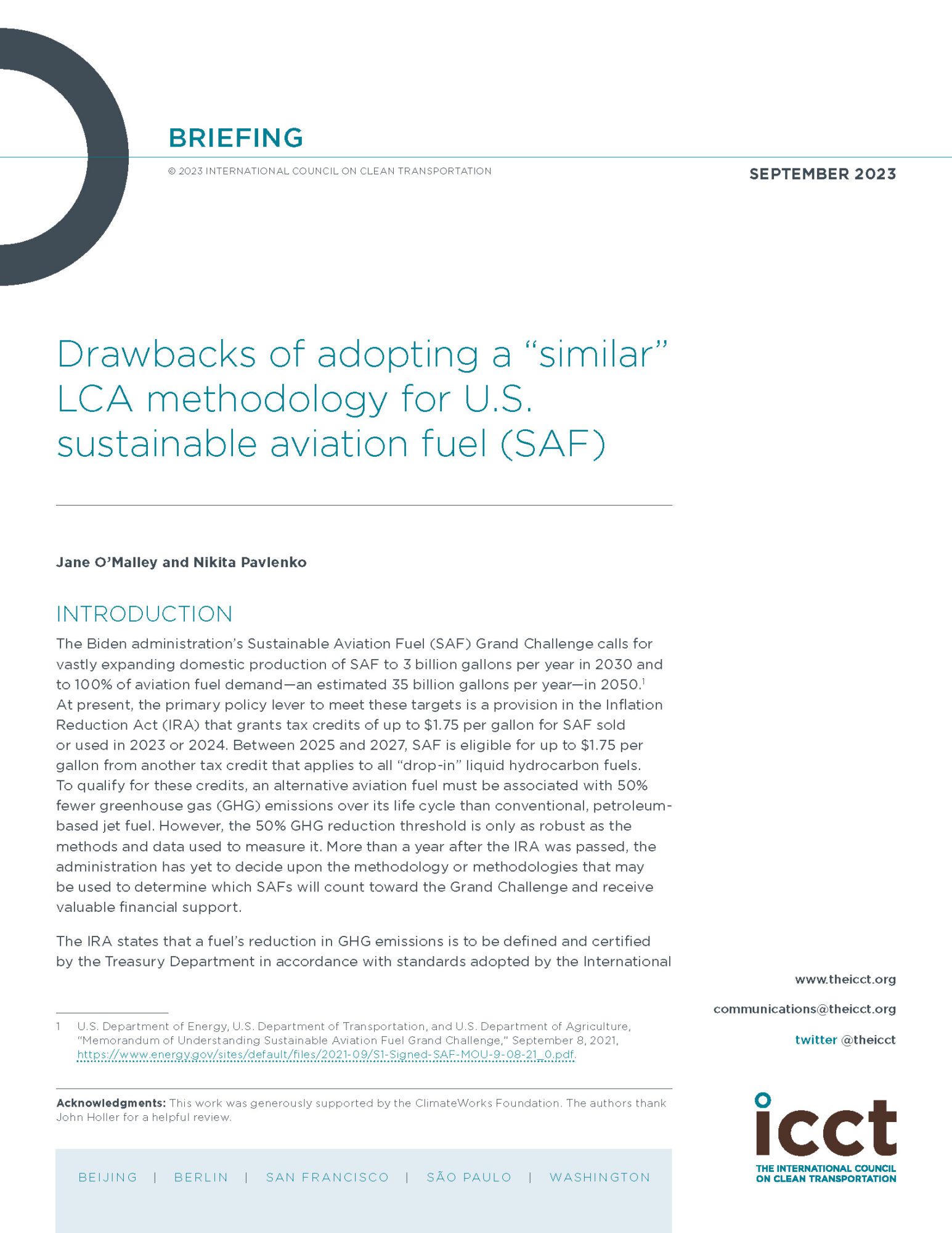Drawbacks of adopting a “similar” LCA methodology for U.S. sustainable aviation fuel (SAF)
Blog
How crediting manure application at farms can get sloppy for fuels policy
With the release of the eligibility guidelines for the U.S. sustainable aviation fuel (SAF) tax credit in the Inflation Reduction Act delayed once more, let’s take some time to explore a key part of the debate about the models (and models within models) that will be used. In upcoming guidance, regulators are slated to decide whether recent updates to the GREET model are sufficient for the model to be used in determining the eligibility criteria for defining SAF. (This and other decisions pick up where the prior guidance left off and GREET has not been approved yet.) Here we’ll focus on the significant risks associated with soil organic carbon (SOC) modeling and crediting manure soil amendments within one of GREET’s underlying sub-modules, the Feedstock Carbon Intensity Calculator (FD-CIC).
Policymakers around the world are increasingly seeking to link what are known as climate-smart agricultural practices with energy policy by crediting emission reductions that occur at the farm within a fuel’s life-cycle assessment (LCA) system boundary. One example is reducing the quantity of fertilizer used to cultivate biofuel feedstocks, and this can indeed lead to meaningful reductions in supply chain emissions. But the same is not true of other agricultural practices. For example, the interagency task group working on the U.S. SAF guidelines is considering crediting practices that increase the carbon content in cultivated soils from manure application. Unfortunately, this is a microcosm for how these credits can go wrong. Although there is evidence that certain agriculture management practices can increase soil carbon content over time, the magnitude and longevity of the benefits are uncertain and difficult to verify. And using GREET to assess the emissions impact risks exacerbating the problem.
Let’s illustrate the difficulty with crediting manure application by using a hypothetical corn farm in Illinois as an example. Using the GREET FD-CIC tool, we calculate that adding 1 t of manure per acre can generate more than 900 g CO2 equivalent (CO2e) of increased soil carbon per bushel; this would, in turn, reduce the calculated fuel production emissions by approximately 4 gCO2e per MJ of corn ethanol. This soil carbon gain is the same no matter what type of manure is used or how much is applied, and it means that whether it’s 10 t or 10 kg of manure per acre, the 900 gCO2e soil carbon credit remains the same. Following the logic of the model, a tablespoon of manure spread across an acre generates a larger carbon credit than the mass of the manure itself. Why?
Although GREET’s FD-CIC allows users to input the behavior at their farm in some detail, including the quantity of manure and even the type of animal the manure comes from, the process of calculating SOC credits doesn’t use that data. Instead, the GREET FD-CIC simply checks if manure application was selected as an option—it’s a yes or no—and then draws upon existing soil carbon modeling to match the farmer’s county code to a county-level analysis that models a 30-year SOC change under corn-soybean cropping rotations. Regardless of the land-use history of any specific farm, the type of manure used, and how much manure is applied, the SOC results draw from a predetermined set of modeled SOC changes to determine the GHG credit that goes toward biofuel production.
Additionally, crediting the change in soil carbon attributable to manure application toward biofuel production means crediting carbon that came from somewhere other than the atmosphere. In its newly released 2023 Billion-Ton Report, the Department of Energy reported that approximately 55% (23 Mt) of manure collected in the United States today is used as fertilizer and an additional 4.6% (3.5 Mt) is treated in anaerobic digesters, to be later converted to heat, power, or transportation fuel. The fate of the remaining roughly 40% of manure is not well documented, but it’s likely managed by various strategies ranging from stacking and drying on concrete pads to collecting in earthen lagoons. Given that more than half the manure in the United States is already applied to land, shuffling this resource from one farm to another will do little to reduce net greenhouse gas emissions.
Indeed, studies that estimate carbon sequestration potential from regenerative agriculture practices typically exclude organic land amendments as a carbon sequestration strategy. The National Academies cautioned that although using manure as a soil amendment can increase soil carbon on a given farm, adding manure in one location often necessitates removing it from another due to the widespread use of manure as a soil amendment. Thus, in many cases, using manure as a regenerative agricultural strategy leads to no net CO2 removal from the atmosphere when the system boundary considered is expanded beyond the level of the individual farm.
Shifting manure from heat and power applications could even potentially increase net GHG emissions. In a previous ICCT study that assessed the indirect emissions impacts from diverting waste products to the biofuels sector, we found that diverting 1 kg of manure being used in heating would need to be replaced with approximately 6.5 MJ of natural gas, the marginal unit of fuel replacement. Assuming that natural gas has a carbon intensity of 67 gCO2e/MJ, we estimate that this would increase overall GHG emissions by approximately 440 g per kg of manure diverted. If this manure were previously converted to biogas and combusted for electricity, we estimate that applying it as a soil amendment would increase net GHG emissions by 135 gCO2e/kg, assuming the 2022 U.S. average electricity grid emissions factor. In cases where the quantity of manure that was previously applied to cropland is only now credited as a soil amendment, it would have no net climate impact. And in cases where manure was previously applied to pastureland or moved from one farm to another, the displacement impacts would depend on differences in climate conditions and farming practices between the two sites. Figure 1 illustrates these different scenarios; note that, despite these potential variations, the FD-CIC in GREET assumes that manure application reduces net GHG emissions in all cases.
Figure 1. Estimated displacement emissions effects when manure is credited as a soil amendment

Using a streamlined Excel model like GREET FD-CIC to assess the emissions impact of manure application oversimplifies the challenge of measuring and validating annual SOC gains at the farm level. Using GREET to credit biofuel producers for SOC changes from manure soil amendments thus comes with so much risk that it’s hard to defend. Net SOC gains would only be expected to occur in the minority of cases where manure was not previously being used for energy recovery or applied to land, and in cases where it’s not shifted from a farm with low SOC storage potential to one with higher potential. And even still, any net SOC benefits remain subject to significant modeling uncertainty. Rewarding this type of agricultural practice within a fuel LCA risks distorting the GHG impacts of fuel production.
Rather than approving the use of the GREET FD-CIC, the interagency task group could instead help to enhance sampling and measurement techniques to assess SOC gains and provide technical assistance to implement conservation practices such as agroforestry and riparian buffers. This could be done using the $19 billion in funding granted to U.S. Department of Agriculture in the Inflation Reduction Act.
Authors
Related Publications

DRAWBACKS OF ADOPTING A “SIMILAR” LCA METHODOLOGY FOR U.S. SUSTAINABLE AVIATION FUEL (SAF)
Highlights key differences in the life-cycle assessment (LCA) methodologies used to estimate the greenhouse gas emissions from sustainable aviation fuel.


